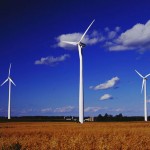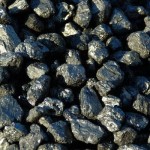 Last week the UK and France signed an agreement on nuclear power that could – going by the growing body of evidence on the rising cost of nuclear power – prove to be a huge drain on the public purse in the future. But at the same UK-France summit, a separate agreement was clinched to build an electricity interconnector between the two countries that could see Europe stepping closer to a more energy-secure future.
Last week the UK and France signed an agreement on nuclear power that could – going by the growing body of evidence on the rising cost of nuclear power – prove to be a huge drain on the public purse in the future. But at the same UK-France summit, a separate agreement was clinched to build an electricity interconnector between the two countries that could see Europe stepping closer to a more energy-secure future.
The interconnector cable, known as the FABLink, will connect France, the Channel Island of Alderney and mainland Britain. Edward Davey, UK Energy Secretary, said he recognises the “importance of further developing new electricity interconnectors between our two countries in order to strengthen further the linking of our grids, improve the security of our energy supplies and facilitate the integration of intermittent energy sources.”
continue reading »
 Comments Off on Despite nuclear deal, English, French and Scottish grids improve
Comments Off on Despite nuclear deal, English, French and Scottish grids improve
 Many of us take electricity for granted. It’s there in the morning when we turn on the kettle and it’s there at night when we switch the lights on. But are people aware of the need to upgrade and extend Europe’s electricity grids? Does anyone know that there is no EU-wide market for electricity and of the benefits that such a market could bring?
Many of us take electricity for granted. It’s there in the morning when we turn on the kettle and it’s there at night when we switch the lights on. But are people aware of the need to upgrade and extend Europe’s electricity grids? Does anyone know that there is no EU-wide market for electricity and of the benefits that such a market could bring?
The results of a new study, which come as EU institutions debate the ‘infrastructure package’ – the European Commission’s draft proposals for updating and interconnecting EU electricity grids – show just what people in Brussels think of electricity grids and the market. Here’s what they had to say: continue reading »
 Comments Off on Single market in electricity should reduce electricity prices
Comments Off on Single market in electricity should reduce electricity prices
 Installed wind power capacity continued to grow around the world last year despite the ongoing financial uncertainty with Europe remaining the number one regional leader, according to a new report.
Installed wind power capacity continued to grow around the world last year despite the ongoing financial uncertainty with Europe remaining the number one regional leader, according to a new report.
Europe’s installed wind capacity increased by 10,281 MW to 96,616 MW by the end of 2011, the Global Wind Energy Council’s (GWEC) annual statistics show. In the EU, the new total was 93,957 MW.
Asia was the second place regional leader with 21,298 additional MW of installed wind capacity, bringing its cumulative total to 82,398 MW. North America was in third place with an additional 8,077 MW last year increasing its total capacity to 52,184 MW. continue reading »
 Comments Off on Global wind power capacity continued to increase in 2011, report shows
Comments Off on Global wind power capacity continued to increase in 2011, report shows
 Tempers seem to have frayed at yesterday’s EU Energy Council over the European Commission’s proposals for an EU-wide energy infrastructure package, the European Voice has reported. Günther Oettinger, European Commissioner for energy, was “visibly frustrated” at the meeting of ministers after many of them said they could not accept transferring authority for energy infrastructure from regions to EU level, the website said.
Tempers seem to have frayed at yesterday’s EU Energy Council over the European Commission’s proposals for an EU-wide energy infrastructure package, the European Voice has reported. Günther Oettinger, European Commissioner for energy, was “visibly frustrated” at the meeting of ministers after many of them said they could not accept transferring authority for energy infrastructure from regions to EU level, the website said.
The news comes as Energy Ministers across Europe were presented with a statement – supported by EWEA, Eurelectric, Europacable and 35 other organisations – calling for an internal EU market for energy and grid extensions and upgrades in order to boost security of supply, achieve our climate goals and bring more renewables online.
continue reading »
 Some strange news has emerged from the World Coal Association recently: the WCA claims that wind turbines use a large amount of coal during their production. At the European Wind Energy Association we recognise that energy is needed during the manufacturing and transport of wind turbines as well as during installation site works, but the amounts suggested by the WCA are way above the reality.
Some strange news has emerged from the World Coal Association recently: the WCA claims that wind turbines use a large amount of coal during their production. At the European Wind Energy Association we recognise that energy is needed during the manufacturing and transport of wind turbines as well as during installation site works, but the amounts suggested by the WCA are way above the reality.
In fact, a wind turbine consumes less than 1g of coal per kilo-Watt hour of electricity produced over its full lifecycle. A coal plant, meanwhile, will consume over 300 times this amount per kWh of electricity, assuming a 40% average efficiency. Moreover, one wind turbine pays back the coal it uses during production with just one month of operation. Looking at all fossil energies used during the lifecycle of a wind turbine, the ‘fossil fuel debt’ ranges from 3-8 months of turbine operation. continue reading »
 Last week the UK and France signed an agreement on nuclear power that could – going by the growing body of evidence on the rising cost of nuclear power – prove to be a huge drain on the public purse in the future. But at the same UK-France summit, a separate agreement was clinched to build an electricity interconnector between the two countries that could see Europe stepping closer to a more energy-secure future.
Last week the UK and France signed an agreement on nuclear power that could – going by the growing body of evidence on the rising cost of nuclear power – prove to be a huge drain on the public purse in the future. But at the same UK-France summit, a separate agreement was clinched to build an electricity interconnector between the two countries that could see Europe stepping closer to a more energy-secure future.










